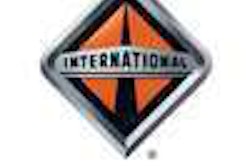There weren’t many cabs lined up outside the airport in South Bend, Ind., but one of the drivers was a hustling sort of entrepreneur. A quick check inside the cab, a few bags were rearranged and I found myself riding into town with an older man, a professional from Connecticut. His son played baseball for Notre Dame, and he was in town to catch the annual Blue and Gold inter-team game that weekend.
And what, my fellow traveler asked, was I in town for? “I’m here for a Hybrid Trucks Users Forum,” I replied. I got a blank look in response. “I’m afraid I don’t know what a hybrid truck is,” the baseball father said.
So I told him. I explained that hybrid trucks had been gradually gaining attention for several years and that I first saw one at the ICUEE utility show in 2004. And although fuel savings were an obvious benefit to having an electric-diesel truck powertrain, the initial benefits were more focused on the trucks as quiet, dependable rolling electric plants powering lift booms and other utility truck applications. Now, with fuel prices fluctuating wildly, hybrid powertrains were garnering a lot more attention, and I was going to find out the latest developments over the next few days.
“Well,” my new friend noted, “It sounds like for once, the trucking industry is ahead of the automobile industry in terms of new technology.”
At the time, I dismissed his comment as simply par for the course. We all know full well just how sophisticated the heavy-duty trucking industry has become in recent years. It’s well worth noting that when the Environmental Protection Agency first unveiled its ever-diminishing NOx and particulate matter emissions guidelines in the late ’90s, many in the trucking industry privately doubted whether the goals were attainable at all.
Next year, those once seemingly impossible goals will be met – although there will be considerable hoops to jump through for fleets and drivers. But the good news is that in 2010, new diesel trucks will, in many cases, act as air scrubbers in major metropolitan areas. The exhaust that comes out of their stacks will be cleaner than the air they took into the engine in the first place. In other areas, the trucking industry is perfecting and adapting collision-warning radar and highly interactive rollover prevention systems that will make our roads safer.
And yet, to the public at large, these impressive technological leaps are mostly unknown. Toyota has its Prius hybrid, which garners all sorts of breathless press accolades. But you never hear a word about Eaton and its truck manufacturing partners’ successful medium-duty hybrid trucks in Car and Driver. I can think of more than one full-size SUV that could use a rollover prevention system. But the highly impressive ZF system I tested this summer in Germany is unknown to most folks on the highway at rush hour.
From an industry perspective, is there any value to telling the world at large about the great strides being made in trucking? For years, conventional wisdom has said no. Trucks are big, they’re loud and they scare people. But at the HTUF conference, I heard a different take: Today, with green initiatives gaining ground in consumers’ minds, being an environmentally-friendly truck company makes a lot of good business sense – particularly in urban areas.
Trucking as an industry has evolved and continues to do so. And fleets like yours have been forced to ante up to buy new technology. You might as well get something in return – even if it’s something as intangible as goodwill. Letting people know that you’re running a safer, cleaner truck is a great starting point – and one that even may help pad your pocketbook later on down the road.










